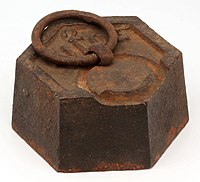Imaginary mass

Have you ever heard of the word "mass"? It's something that can be measured to tell how heavy and big something is. But have you heard of "imaginary mass"?
Well, you know how some things are really, really tiny, like atoms? They're so small that we can't even see them with our eyes! And some scientists use special tools like microscopes to look at them and study their behavior.
It turns out that when we study these atoms, we can see some unusual things happening. One of these things is called "imaginary mass". Now, don't worry, it's not really imaginary like unicorns or fairies. It's just a scientific term that describes something that looks like mass, but it's not really there.
Imagine you have a toy car and you add a weight to it to make it heavier. The car now has more mass because it's heavier. But imagine you take away that weight, and the car becomes lighter. It has less mass now because it's lighter.
Now imagine a particle, like an electron, that has imaginary mass. This means it looks like it has more mass than it actually does. And if we take away that imaginary mass from the electron, it becomes lighter just like the toy car without the weight.
Scientists use imaginary mass to help explain how particles behave in different situations. They also use it to help make predictions about what might happen in certain experiments. It's a really important concept in the world of science!
So, in short, imaginary mass is like a pretend weight that some particles have. Scientists use it to help explain things about these particles and their behavior.
Well, you know how some things are really, really tiny, like atoms? They're so small that we can't even see them with our eyes! And some scientists use special tools like microscopes to look at them and study their behavior.
It turns out that when we study these atoms, we can see some unusual things happening. One of these things is called "imaginary mass". Now, don't worry, it's not really imaginary like unicorns or fairies. It's just a scientific term that describes something that looks like mass, but it's not really there.
Imagine you have a toy car and you add a weight to it to make it heavier. The car now has more mass because it's heavier. But imagine you take away that weight, and the car becomes lighter. It has less mass now because it's lighter.
Now imagine a particle, like an electron, that has imaginary mass. This means it looks like it has more mass than it actually does. And if we take away that imaginary mass from the electron, it becomes lighter just like the toy car without the weight.
Scientists use imaginary mass to help explain how particles behave in different situations. They also use it to help make predictions about what might happen in certain experiments. It's a really important concept in the world of science!
So, in short, imaginary mass is like a pretend weight that some particles have. Scientists use it to help explain things about these particles and their behavior.
Related topics others have asked about:
